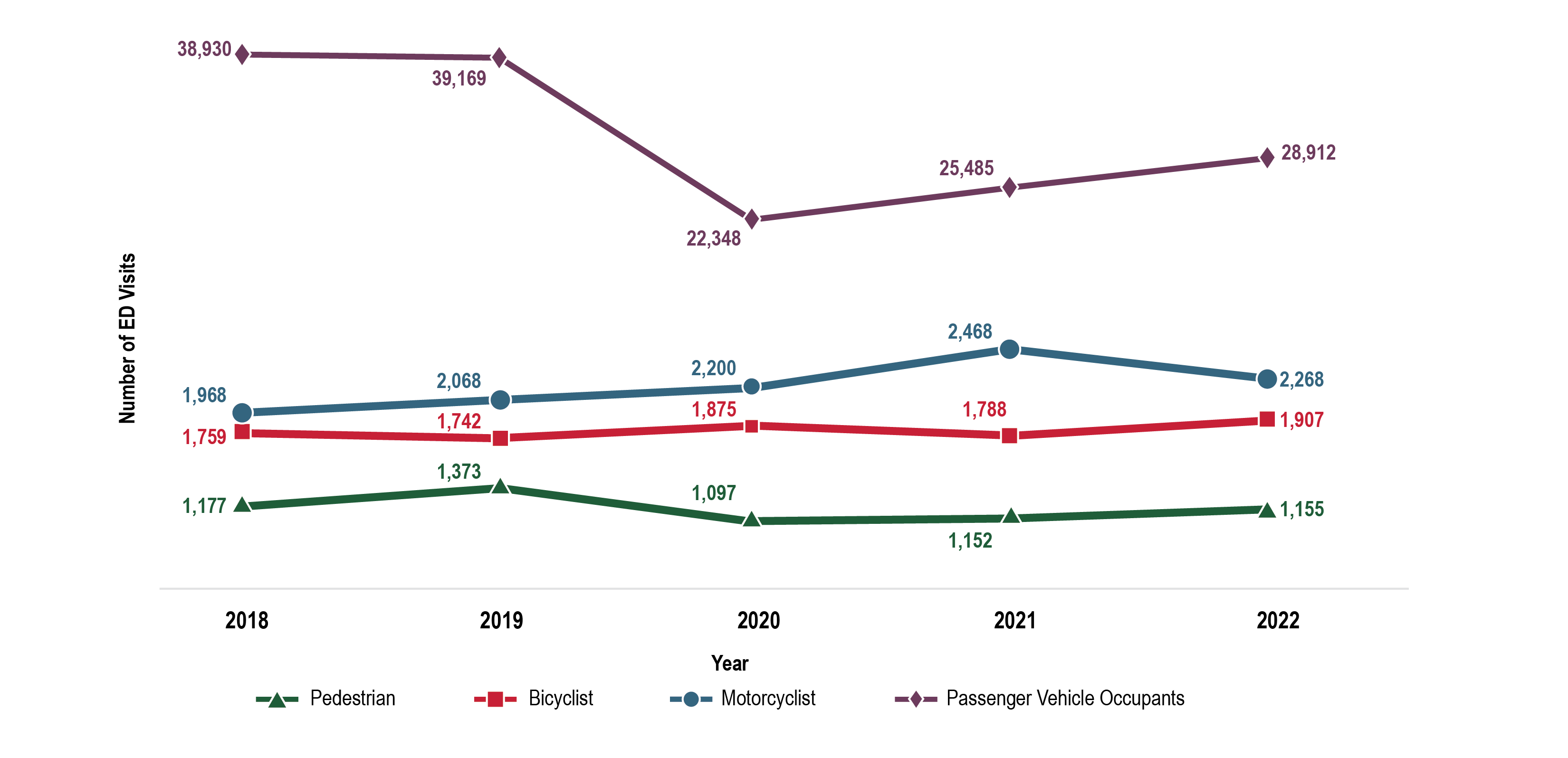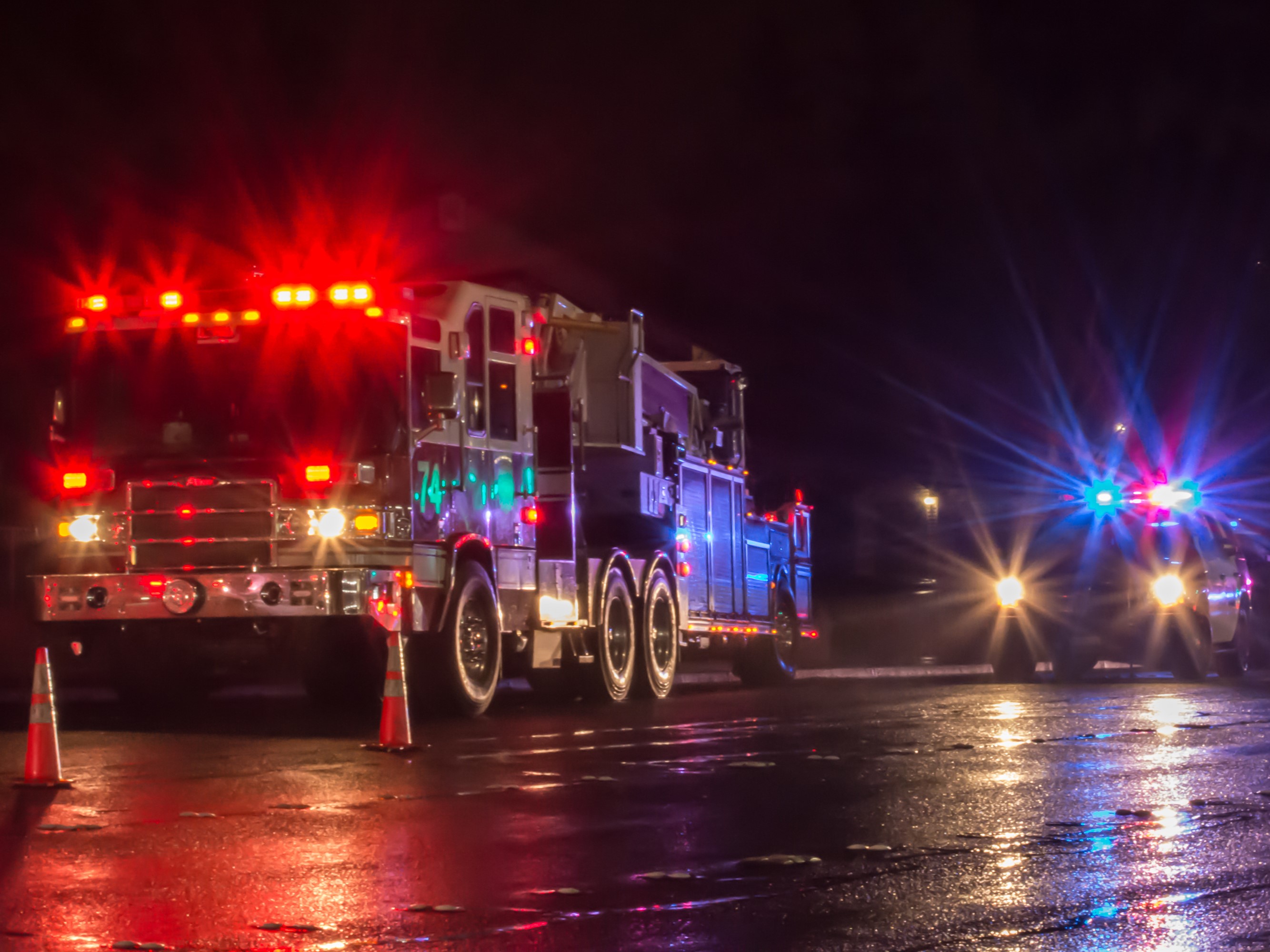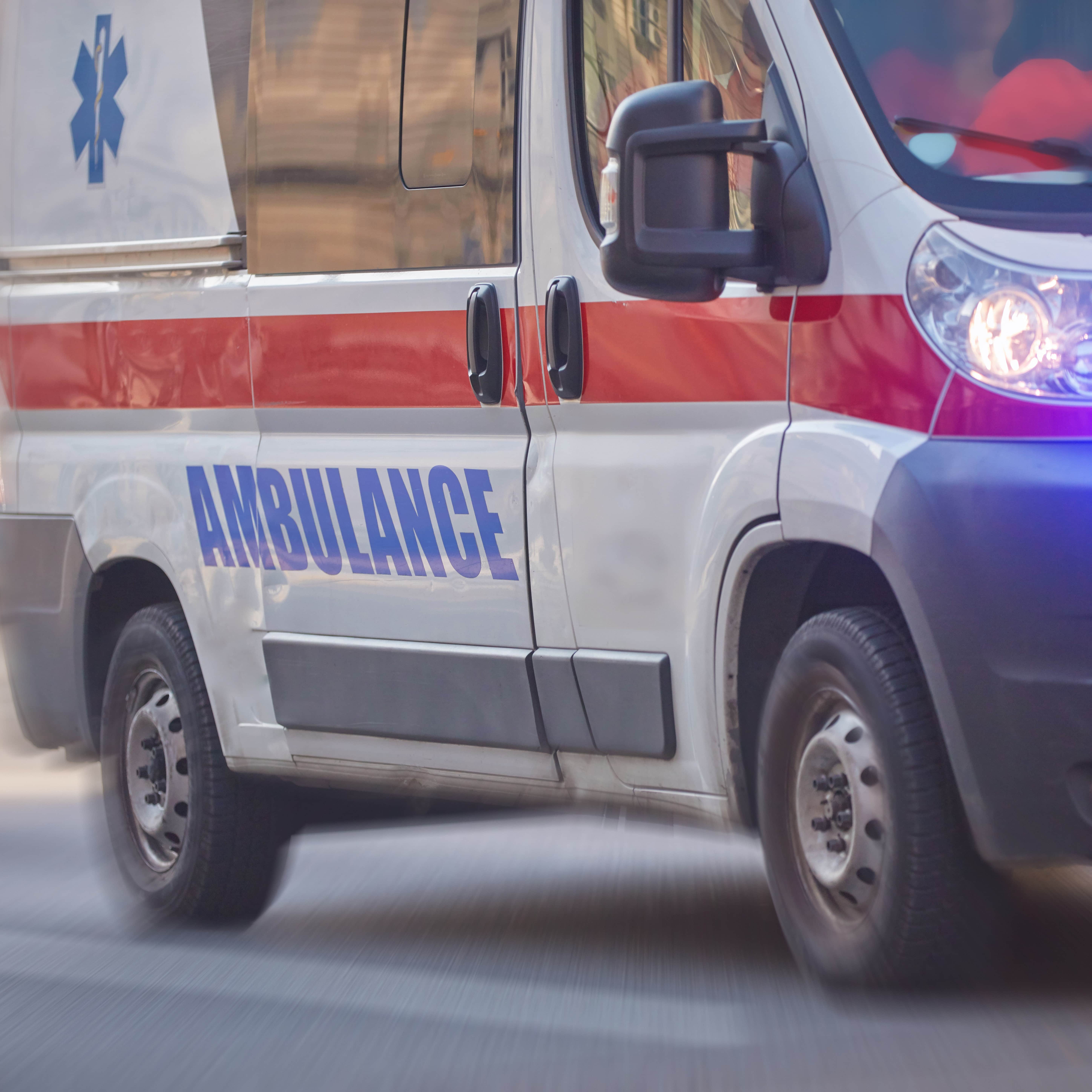Post-Crash Care
Colorado has identified post-crash care as an essential component of achieving a safer transportation network. Post-Crash Care focuses on enhancing the survivability of crashes through expedited response by first responders, creating safe working environments for responders and reducing the potential of secondary crashes through effective traffic incident management practices. A series of time-sensitive actions are essential to provide effective care for the injured, beginning with activation of the emergency care system and continuing with care at the scene, during transportation to a healthcare center and hospital-based emergency care.
Trends
Emergency Department Visits by Mode - Graph

Emergency Department Visits by Mode - Table
| 2018 | 2019 | 2020 | 2021 | 2022 | |
|---|---|---|---|---|---|
| Motorcyclist | 1,968 | 2,068 | 2,200 | 2,468 | 2,268 |
| Bicyclist | 1,759 | 1,742 | 1,875 | 1,788 | 1,907 |
| Pedestrian | 1,117 | 1,373 | 1,097 | 1,152 | 1,155 |
| Passenger Vehicle Occupants | 38,930 | 39,169 | 22,348 | 25,485 | 28,912 |
The data source for this data is the Colorado Department of Public Health and Environment (CDPHE) Injury Indicators Dashboard. Reference more crash data and key transportation safety data information on the CDPHE Injury Indicators Dashboard.

Traffic Incident Management
Traffic crashes occur everyday on Colorado roadways, requiring a team of responders from law enforcement to EMS to towing companies to clean up the aftermath safely and efficiently. Together, these teams perform Traffic Incident Management (TIM) with the goal of shortening the duration of a crash, restoring normal traffic flow and maintaining a safe environment at the crash site. In 2022, CDOT and CSP reported 48 struck-by incidents. Colorado is proactively working to improve safety at crash sites by enhancing trainings, expanding the use of technology to communicate with drivers and responders and increasing awareness through public campaigns.
Resource Links

Emergency Medical Services (EMS)
A crash persists long after the initial impact. Approximately, 40% of crash victims who survive the impact of a crash die afterward. Immediate medical attention and proper care is the difference between property damage and a fatality. EMS plays a pivotal role in saving lives through efficient response and appropriate care. Ensuring EMS systems are well staffed and resourced allows them to provide the best level of care to victims, while reducing injury severity and long-term costs. Strategies to improve EMS systems include completing the national trauma system, improving the level of care at trauma centers and reducing the variability in EMS.
Resources:

Strategies
The SHSP identified the following strategies to advance the standard of practice for both TIM and EMS activities across Colorado and promote multidisciplinary coordination.
- PC01: Improve collection of post-crash care data
- PC02: Improve quality of care
- PC03: Provide education on best-practices
- PC04: Enhance programs in light of post-crash care outcomes
- PC05: Support statewide TIM activities
Additional Tools & Resources
Safety Portal
Find current safety statistics, read related safety plans, explore data dashboards and learn about our funding programs.
Get Involved
Contact Us
Sign up for safety newsletters and contact the ATS Planning and Implementation Team!